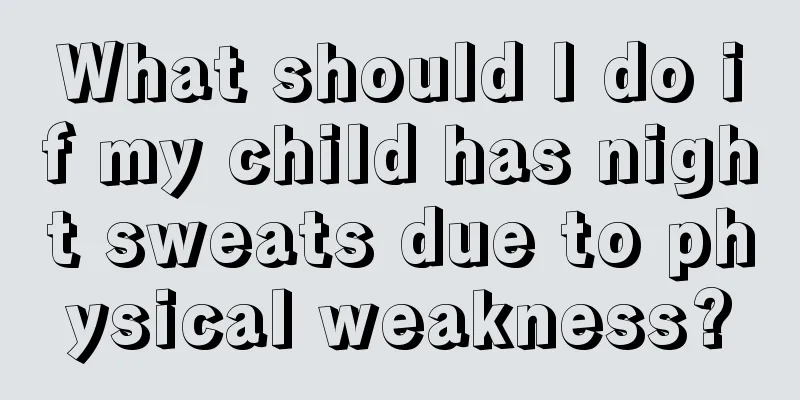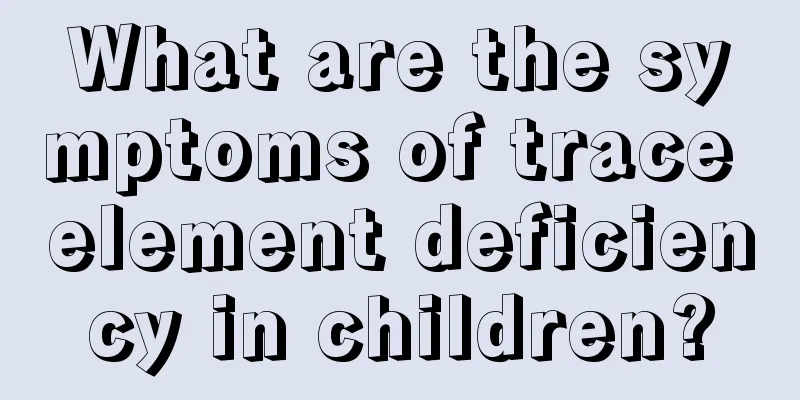Symptoms of acute upper respiratory tract infection in children

|
In fact, nowadays, many parents are busy with work and have no time to take good care of their children. However, children’s resistance is relatively poor. If you are not careful, it may lead to complications. Let us take a look at the symptoms of acute upper respiratory tract infection in children. Main symptoms: 1. The incubation period is usually 2 to 3 days or slightly longer. 2. Mild cases only have nasal symptoms, such as clear runny nose, nasal congestion, sneezing, etc., and may also include tearing, slight cough or throat discomfort. They can heal naturally within 3 to 4 days. If infected, involving the nasopharynx and pharynx, there are often fever, sore throat, tonsillitis and congestion and hyperplasia of the lymphatic tissue on the posterior pharyngeal wall. Sometimes the lymph nodes may be slightly enlarged. The fever may last for 2 to 3 days to about 1 week. It is easy to cause vomiting and diarrhea in infants and young children. 3. In severe cases, the body temperature may reach 39-40℃ or higher, accompanied by a sense of cold, headache, general weakness, a sharp decrease in appetite, and restless sleep. Soon, the skin may turn slightly red, and herpes and ulcers may occur, which is called herpes pharyngitis. Sometimes the redness and swelling are obvious, affecting the tonsils, and follicular purulent exudate appears. Throat pain and systemic symptoms are added. The nasopharyngeal secretions change from thin to sticky, and the submandibular lymph nodes are significantly enlarged and tender. If the inflammation spreads to the sinuses, middle ear or trachea, other symptoms will occur, and the systemic symptoms will also be more serious. Among the more serious symptoms, attention should be paid to high fever convulsions and acute abdominal pain, and differential diagnosis should be made from other diseases. High fever convulsions caused by acute upper respiratory tract infection are mostly seen in infants and young children, and occur several times in a row 1-2 days after onset. Acute abdominal pain is sometimes very severe, mostly around the umbilicus, without tenderness, often appears early, and is mostly temporary, which may be related to hyperperistalsis of the intestine; but it can also persist, sometimes similar to the symptoms of appendicitis, mostly due to concurrent acute mesenteric lymphadenitis. 4. Acute tonsillitis is a part of acute pharyngitis. Its course and complications are not exactly the same as those of acute pharyngitis. Therefore, it can be treated as a separate disease or incorporated into pharyngitis. For those caused by viruses, white speckled exudates can sometimes be seen on the surface of the tonsils. At the same time, small ulcers can be seen on the soft palate and the posterior wall of the pharynx. The buccal mucosa on both sides is congested with scattered bleeding spots, but the mucosa appears smooth, which can be distinguished from measles. For those caused by streptococci, it is generally more common in children over 2 years old. There are many systemic symptoms at the time of onset, such as high fever, chills, vomiting, headache, abdominal pain, etc. Later, the thrombotic pain may be mild or severe, and swallowing may be difficult. The tonsils are mostly diffusely red and swollen, or show follicular purulent exudates at the same time. The patient's tongue is red, or there is thick fur. If not treated in time, complications are likely to occur, mainly sinusitis, otitis media and lymphadenitis. 5. In blood test, in case of viral infection, the white blood cell count is generally low or within the normal range, but in the early stage, the total white blood cell count and the percentage of neutrophils may be higher; in case of bacterial infection, the total white blood cell count is mostly increased, and may sometimes decrease in severe cases, but the percentage of neutrophils is still increased. The above article gives you a detailed introduction to the symptoms of acute upper respiratory tract infection in children. I believe everyone has a relatively preliminary understanding. Therefore, if your children encounter such a situation in life, you should go to the hospital for treatment in time. |
<<: Diet therapy for six-month-old baby cough
>>: Nursing methods for children with fever and cold limbs
Recommend
What are the developmental standards for twelve-month-old babies?
The baby is the biggest concern of the family, an...
What should I do if my child has a fever of 45 degrees?
Fever is a common condition for everyone. Fever i...
What to do if baby has phlegm in throat?
It is precisely because infants and young childre...
Diseases that may be caused by excessive eye mucus in newborn babies
Speaking of eye boogers, I believe everyone is fa...
Why do children get rashes? Common types of rashes in children
There are many diseases that may cause skin aller...
How to treat children with Yin deficiency and hyperactivity of fire
Nowadays, many parents like to give their childre...
What should I do if my child won’t stop coughing? These remedies work!
Everyone knows that children often cough, so many...
What kind of milk powder should babies with anemia drink?
When it comes to choosing milk powder for their b...
How to relieve itching of children's wind pimples
Wind bumps are what we call urticaria, which are ...
What should babies with bad stomachs eat?
Some babies look much thinner than children of th...
Two-month-old baby sleep precautions
Children’s physical condition is getting worse da...
No hair on the back of the head
Some mothers find that their babies have no hair ...
Causes of vaginitis in children
In the eyes of many people, vaginitis only occurs...
What is the best treatment for bronchitis in children?
Childhood bronchitis is very common in life, but ...
Is encephalitis contagious?
We have all heard of the occurrence of tetanus. I...









